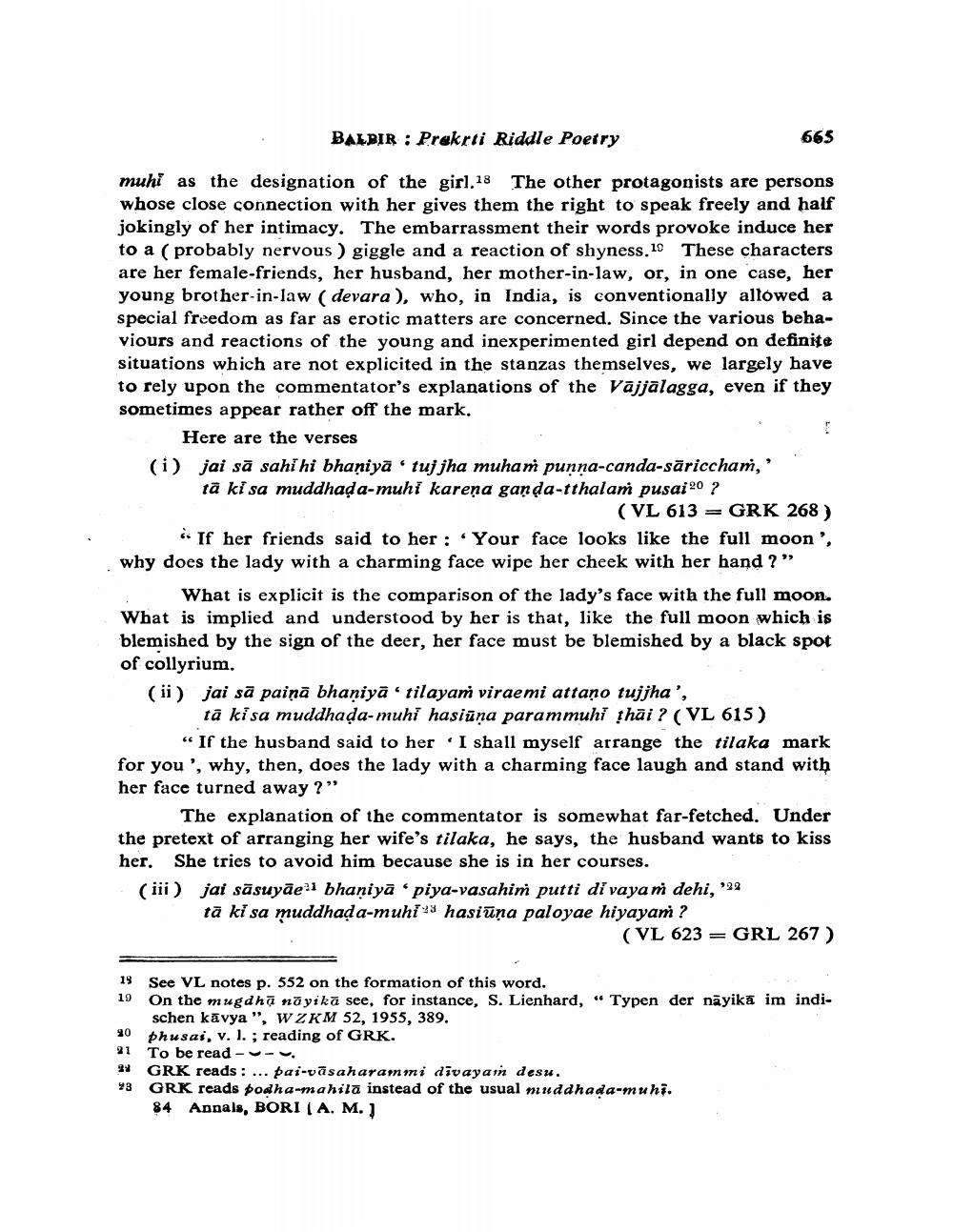Book Title: Prakrit Riddle Poetry Author(s): Nalini Balbir Publisher: Nalini Balbir View full book textPage 5
________________ BALBIR : Prakrti Riddle Poetry 665 TE muhi as the designation of the girl.18 The other protagonists are persons whose close connection with her gives them the right to speak freely and half jokingly of her intimacy. The embarrassment their words provoke induce her to a (probably nervous ) giggle and a reaction of shyness. 19 These characters are her female-friends, her husband, her mother-in-law, or, in one case, her young brother-in-law (devara), who, in India, is conventionally allowed a special freedom as far as erotic matters are concerned. Since the various behaviours and reactions of the young and inexperimented girl depend on definite situations which are not explicited in the stanzas themselves, we largely have to rely upon the commentator's explanations of the Vājjalagga, even if they sometimes appear rather off the mark. Here are the verses (i) jai sā sahihi bhaniyātuj jha muham punna-canda-săriccham,' tā ki sa muddhada-muhi karena ganda-tthalam pusai 20 ? (VL 613 = GRK 268 ) - If her friends said to her : Your face looks like the full moon', why does the lady with a charming face wipe her cheek with her hand ?” What is explicit is the comparison of the lady's face with the full moon. What is implied and understood by her is that, like the full moon which is blemished by the sign of the deer, her face must be blemished by a black spot of collyrium. (ii) jai sā painā bhaniyātilayam viraemi attano tujjha', tā kisa muddhada-muhi hasiūna parammuhi thai ? (VL 615) “If the husband said to her I shall myself arrange the tilaka mark for you ', why, then, does the lady with a charming face laugh and stand with her face turned away?” The explanation of the commentator is somewhat far-fetched. Under the pretext of arranging her wife's tilaka, he says, the husband wants to kiss her. She tries to avoid him because she is in her courses. (iii) jai sāsuyāei bhaniyā 'piya-vasahim putti di vayam dehi, '32 tā ki sa muddhada-muhi hasiūņa paloyae hiyayam ? (VL 623 = GRL 267) 21 See VL notes p. 552 on the formation of this word. 19 On the mugdhā nāyika see, for instance, S. Lienhard, “ Typen der näyikā im indi schen kāvya ", WZKM 52, 1955, 389. phusai, v. 1. ; reading of GRK. To be read - - 34 GRK reads: ... pai-vāsaharammi divayam desu. GRK reads podha-mahila instead of the usual muddhada-muhi. 84 Annals, BORI (A. M.)Page Navigation
1 ... 3 4 5 6 7 8 9 10 11 12 13
